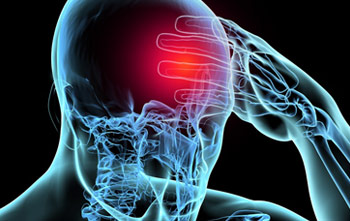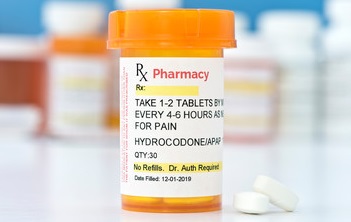
Off-Label Treatment Helps With Fibromyalgia
An unlikely, decades-old drug is gaining traction as a promising off-label treatment for fibromyalgia, driven by a handful of studies and a growing number of anecdotal reports.
Low-dose naltrexone (LDN), a medication originally developed to treat substance use disorders, is said to relieve the chronic pain, fatigue, and brain fog associated with the debilitating condition that afflicts millions of Americans but is difficult to treat.
“It helps over 70% of my patients,” said Scott Zashin, MD, a Dallas-based rheumatologist, and fellow of the American College of Rheumatology. “I’d say less than 10% need to stop it because of side effects.”
Used for decades at doses of 50-100 mg to treat opioid and alcohol use disorders, the drug at that high dose binds to opioid receptors, blocking opioids from attaching to the receptors, so people don’t get that feel-good sensation from booze or drugs.
Early researchers found an unexpected result: “We noticed that when people tapered down to lower doses, their pain would also get better,” said Arya Mohabbat, MD, assistant professor at the Mayo Clinic College of Medicine and Science, Rochester, Minnesota.
Today the LDN trend is fueled primarily by success stories rather than large-scale trials.
One of those stories is Dan Kenyon, age 45, who says LDN reduced his pain by more than half. “It has helped even more with brain fog, fatigue, and sleep,” said Kenyon from Iowa, who was diagnosed in his early thirties after years of unexplained muscle soreness and fatigue.
Despite the word-of-mouth buzz, though, many doctors are not aware of it, don’t think there’s enough evidence to prescribe it, or don’t know how to prescribe it because it’s not marketed by pharmaceutical companies. Still others see LDN as a low-risk, low-cost treatment option for fibromyalgia and other chronic pain conditions — and blame lack of pharmaceutical investment for impeding its progress.
“Naltrexone is an old cheap generic medication,” said Mohabbat. “Just because you formulate it to a lower dose, it doesn’t change the patent, and they can’t charge a lot of money for it.”
How Patients in Pain Are Finding LDN
Looking back, Kenyon thinks the pain started when he was about 20. He had a physically demanding job in fire and water damage restoration, and his muscles would ache throughout the day, pain lingering into the next morning. Even after switching to less strenuous work — first running a retail store, then an online screen-printing business — his pain kept getting worse. Soon it was joined by depression and insomnia. “I got to a point where I just couldn’t motivate myself to work anymore, my sales slowed down, and I didn’t care,” Kenyon said.
At age 32, he saw a rheumatologist who diagnosed him with fibromyalgia. He tried gabapentin, but it gave him panic attacks and affected his balance. Weaning off it was so hard he was reluctant to try other medications.
Browsing an online message board, he read success stories of people on LDN. His rheumatologist said he hadn’t heard of naltrexone being used for chronic pain and wasn’t willing to prescribe it. So Kenyon dropped it.
“Things started getting more painful for me last fall, so it sparked my interest in it again,” Kenyon said. On Reddit, he learned how to get it prescribed online, purchased through a compounding pharmacy.
“I was nervous to try it but started with a very low dose and kept bumping it up every 6 or 7 days,” Kenyon said. It took about 3 months to get to 4.5 mg, which is considered an effective dose. It was working: “I have upwards of a 50% reduction in pain.”
Few Studies, Promising Results
Several studies back LDN for fibromyalgia, though most are small.
In 2013, a randomized controlled study of 31 women with fibromyalgia found that LDN offered an average 29% reduction in pain vs 18% for women on a placebo. An analysis of that data found that half the women on LDN were “much improved” or “very much improved” — compared with just 20%-30% of patients who find meaningful improvement on current fibromyalgia-approved medications, said study author Jarred Younger, PhD, director of the Neuroinflammation, Pain and Fatigue Laboratory at The University of Alabama at Birmingham.
A 2023 cohort study of LDN for pain conditions included 115 people, most having fibromyalgia. The study found that 65% reported a benefit in their pain and other symptoms. A review of nine studies found LDN effective in managing fibromyalgia symptoms, and so did a 2024 review of randomized controlled trials.
Further research shows pain improvements in other conditions, like Crohn’s disease and Long COVID.
To be sure, more research is needed. “We need a double blinded randomized trial for 12 months that looks at side effects and how people do functionally,” said Mohabbat.
“There’s still that question mark in the air,” said Younger. “Clearly it helps a lot of people, but without the study, a lot of physicians aren’t going to want to use it,” he said. But the buzz is growing. “LDN comes up in every medical conference.”
How LDN Works
LDN is thought to tamp down nerve inflammation responsible for many of the symptoms of fibromyalgia like pain, fatigue, malaise, brain fog, and flu-like symptoms. In fibromyalgia, glial cells, which support neurons, are activated, causing an inflammatory response. LDN blocks a receptor that activates glial cells, stopping the inflammatory cascade.
Like any medication, it doesn’t help everyone and won’t completely get rid of symptoms. But for those it helps, it can be life changing.
Jane Lamping, age 53, who lives in San Diego, was diagnosed with fibromyalgia in 2014, and has tried a long list of medications — among them Tramadol, Lyrica, Cymbalta, Fetzima, Mobic, gabapentin, Toradol injections. But she continued to have many flares, which left her unable to keep a job. Like many with fibromyalgia, Lamping had to carefully manage her exertion to try to prevent flares. In 2022, her doctor, who had been following the research on LDN, suggested she try it.
It reduced her pain, brain fog, and fatigue. “It has helped immensely. I do still get flares and pain cycles. But they are less frequent, and it has reduced the intensity as well,” she said. A bonus: It helped with her migraines.
A Crowd-Sourced Approach in the Absence of Robust Data
Kenyon, like many people, learned how to take LDN from online groups and shared it with his physician — a crucial step, Zashin said. “The window for optimally dosing naltrexone is very small and requires high accuracy,” said Younger. Like any medication, it carries potential risks.
The most common side effect is vivid dreams, which can be disturbing. These affect about a third of people who take it but can be minimized by not taking it right before bed. Other side effects, which studies suggest affect up to 10% of people, include headaches and gastrointestinal symptoms.
For some, LDN can temporarily cause their pain to worsen.
It happened to Michelle Smedley, age 62, of Lake Havasu City, Arizona. About 12 years ago, she decided to try LDN for her fibromyalgia, which she’s had since she was a teenager. Her doctor started her on 3 mg, which is considered a relatively high starting dose today. “I had more pain, was achy, tired, had bad insomnia, but my doctor kept telling me to hang in there,” she said.
Finally, in the first week of month 4, she started to feel better and showed steady improvement. The pain went from about an 8 on a pain scale to a 6. Today, she said, she’s 80% herself. “Being a grandmother on LDN is delightful,” she said. “I can play with them, swim with them. I wasn’t able to do that raising my son.”
Younger recommends starting at about 1 mg or even less if you’re sensitive to medications, holding there for a couple of weeks, and then increasing the dose to 2 or 3 mg, holding there, and then increasing again. The therapeutic dose is considered 4.5 mg, but some people get relief at a lower dose, and some have to go up to about 6 mg.
Zashin, who has been prescribing LDN for 15 years, starts patients at 0.5 mg and increases it weekly until they find an effective dose. “There’s a sweet spot for some people where they might do better at 2 than 3 mg,” he said. On average, his patients land between 3 and 4.5 mg.
“Almost all of the side effects are transient, while your body is getting adjusted” — which can take up to 2-3 months, said Mohabbat.
LDN is often considered a last resort approach, after people have failed with other medications. But some believe it could be used sooner.
“It’s actually one of my first line treatments for fibromyalgia,” said Zashin. “I’ve seen it change people lives dramatically.”
“I think there’s no problem with trying the other medications first, but the majority of people will not respond to them,” Younger said. “If it’s not helping, I’d quickly move to LDN.”
LDN is available at compounding pharmacies and some online shops, such as AgelessRx, because it’s sometimes marketed as a longevity medication. Typical out-of-pocket cost ranges from $30 to $100 a month, and it is not covered by insurance.
“Because the side effects seem to be minimal, I think it is an appropriate thing for a physician to consider trying for their patients,” said Younger.
Article from medscape.com.
Discover the potential of low‑dose naltrexone (LDN) in autoimmune care with the Low Dose Naltrexone: Off-Label Applications in Autoimmune Disease Management course from Pedagogy Education—practical insights you can apply in your practice today!

